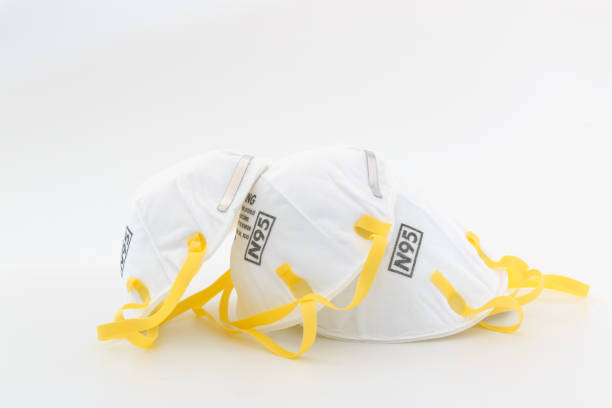In the realm of personal protective equipment (PPE), masks play a crucial role in safeguarding against airborne contaminants and protecting both the wearer and those around them. Among the various types of masks available, n95 mask and surgical masks are two of the most commonly used. While they may seem similar at a glance, their design, functionality, and applications differ significantly. This article explores the key differences between N95 masks and surgical masks, shedding light on their respective uses, benefits, and limitations.
What is an N95 Mask?
An N95 mask, also known as an N95 respirator, is a type of particulate-filtering respirator that meets the standards set by the National Institute for Occupational Safety and Health (NIOSH). The “N95” designation signifies that the mask filters out at least 95% of airborne particles, including large respiratory droplets and smaller aerosols that may contain viruses, bacteria, or other contaminants. N95 masks are designed to provide a tight seal around the face, ensuring that the air inhaled by the wearer is filtered effectively.
What is a Surgical Mask?
A surgical mask, also known as a medical mask, is a disposable mask designed to protect the wearer from large particles and droplets and to prevent the wearer from spreading respiratory droplets to others. Surgical masks are primarily intended for use in healthcare settings, where they help reduce the risk of transmission of infectious agents during procedures and patient care. They are not designed to provide a tight seal around the face, and their primary function is to act as a barrier to respiratory droplets.
Key Differences Between N95 Masks and Surgical Masks
1. Filtration Efficiency
N95 Masks: N95 masks are designed to filter out at least 95% of airborne particles, including those as small as 0.3 microns in diameter. This high level of filtration is achieved through a combination of mechanical and electrostatic processes. The filter media in N95 masks consists of multiple layers of non-woven polypropylene fibers that capture particles through various mechanisms, including inertial impaction, diffusion, and electrostatic attraction. The electrostatic charge in the filter media enhances its ability to attract and trap smaller particles, making N95 masks highly effective at filtering out both large droplets and tiny aerosols.
Surgical Masks: Surgical masks are designed to filter out larger particles and droplets but are generally less effective than N95 masks at filtering smaller particles. They typically have a filtration efficiency of around 60-80% for particles larger than 0.3 microns. Surgical masks are intended to protect others from the wearer’s respiratory emissions rather than providing a high level of protection to the wearer from inhaling airborne contaminants. They are often made from multiple layers of non-woven fabric and may include a fluid-resistant outer layer to protect against splashes and bodily fluids.
2. Fit and Seal
N95 Masks: One of the defining features of N95 masks is their ability to form a tight seal around the face. This seal ensures that the air inhaled by the wearer is filtered through the mask, minimizing the risk of unfiltered air entering around the edges. Achieving a proper fit is crucial for the mask’s effectiveness, and fit-testing is often required to ensure that the mask provides an adequate seal. N95 masks are designed with adjustable nose clips and elastic straps to help achieve a secure fit.
Surgical Masks: Surgical masks are designed to fit loosely over the nose and mouth, which means they do not provide a tight seal around the face. This loose fit allows unfiltered air to potentially enter around the edges of the mask. The primary purpose of surgical masks is to act as a barrier to respiratory droplets and prevent the wearer from spreading germs to others. While they help reduce the transmission of droplets, they are less effective at protecting the wearer from inhaling airborne contaminants compared to N95 masks.
3. Use and Application
N95 Masks: N95 masks are commonly used in environments where there is a high risk of exposure to airborne contaminants, including healthcare settings, industrial environments, and areas with high levels of air pollution. In healthcare settings, N95 masks are used to protect healthcare workers from airborne pathogens, especially during procedures that generate aerosols. In industrial settings, they are used to protect workers from dust, fumes, and other particulate matter. N95 masks are also recommended for the general public during public health emergencies, such as pandemics, when the risk of exposure to airborne pathogens is elevated.
Surgical Masks: Surgical masks are primarily used in healthcare settings to protect patients and healthcare workers from the transmission of respiratory droplets and bodily fluids. They are commonly worn during surgical procedures, patient care, and other activities where there is a risk of exposure to infectious agents. Surgical masks are also used in some other settings, such as food preparation and certain public spaces, to reduce the spread of respiratory droplets and prevent the wearer from spreading illnesses to others.
4. Comfort and Breathability
N95 Masks: N95 masks are designed with multiple layers of filter media, which can make them less breathable compared to surgical masks. The tight seal and high filtration efficiency can result in increased resistance to airflow, which may cause discomfort for some users, especially during extended wear. N95 masks are designed to balance protection with comfort, but they may require periodic adjustments or breaks to ensure proper fit and reduce discomfort.
Surgical Masks: Surgical masks are generally more breathable and comfortable for extended wear compared to N95 masks. They are designed to allow for easier airflow, which can reduce discomfort during prolonged use. However, their looser fit means they do not provide the same level of protection against airborne contaminants as N95 masks. Surgical masks are often used in situations where comfort and ease of breathing are prioritized over the highest level of filtration.
Conclusion
N95 masks and surgical masks serve distinct purposes and offer different levels of protection against airborne contaminants. N95 masks are designed for high-efficiency filtration and a tight seal, making them ideal for environments with high levels of airborne particles and pathogens. They are commonly used in health administration, industrial environments, and during public health emergencies. In contrast, surgical masks are designed to protect against larger droplets and are primarily used to prevent the wearer from spreading respiratory droplets to others. They are commonly used in healthcare settings and other environments where a barrier to respiratory droplets is needed.
Understanding the key differences between N95 masks and surgical masks can help individuals and organizations make informed decisions about which type of mask is appropriate for their specific needs and situations. Whether prioritizing high-level filtration, comfort, or protection for others, choosing the right mask is essential for effective respiratory protection and overall health and safety.


